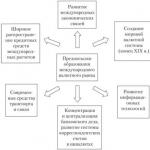The human body contains almost all the elements of the table of D. I. Mendeleev, but not all of them carry such biological significance as iron. Iron in the blood is most concentrated in red blood cells- namely, in their important component - hemoglobin: heme (Fe ++) + protein (globin).
A certain amount of this chemical element is permanently present in plasma and tissues - as a complex compound with protein and in the composition of hemosiderin. In the body of an adult, it should normally be from 4 to 7 grams of iron.. The loss of an element for any reason entails an iron deficiency condition called anemia. To identify this pathology in laboratory diagnostics, such a study is provided as the determination of serum iron, or iron in the blood, as the patients themselves say.
The rate of iron in the body
In the blood serum, iron is found in combination with a protein that binds and transports it - transferrin (25% Fe). Usually, the reason for calculating the concentration of an element in the blood serum (serum iron) is a low level of hemoglobin, which, as you know, is one of the main parameters.
The level of iron in the blood fluctuates during the day, its average concentration for men and women is different and is: 14.30 - 25.10 µmol per liter of male blood and 10.70 - 21.50 µmol / l in the female half. Such differences are most due to the menstrual cycle, which affects only persons of a certain sex. With age, the differences are erased, the amount of the element decreases in both men and women, and iron deficiency can be observed to the same extent in both sexes. The rate of iron in the blood of infants, as well as children and adults, males and females, is different, therefore, to make it more convenient for the reader, it is better to present it in the form of a small table:
Meanwhile, it should be borne in mind that, like other biochemical indicators, the normal level of iron in the blood in different sources may vary slightly. In addition, we consider it useful to remind the reader of the rules for passing the analysis:
- They donate blood on an empty stomach (it is desirable to starve for 12 hours);
- One week before the study, tablets for the treatment of IDA are canceled;
- After a blood transfusion, the analysis is postponed for several days.
To determine the level of iron in the blood, serum is used as a biological material, that is, blood is taken without an anticoagulant in a dry new a test tube that never comes into contact with detergents.
The functions of iron in the blood and the biological significance of the element
Why is so much attention riveted to iron in the blood, why is this element classified as a vital component, and why can a living organism do without it? It's all about the functions that iron performs:
- Concentrated in the blood ferrum (heme hemoglobin) is involved in the respiration of tissues;
- The trace element located in the muscles (in the composition) ensures the normal activity of skeletal muscles.
The main functions of iron in the blood coincide with one of the main tasks of the blood itself and the content contained in it. Blood (erythrocytes and hemoglobin) takes oxygen from the external environment into the lungs and transports it to the most remote corners of the human body, and carbon dioxide formed as a result of tissue respiration is carried out for removal from the body.

scheme: myshared, Efremova S.A.
Thus, iron plays a key role in the respiratory activity of hemoglobin, moreover, this applies only to the divalent ion (Fe++) . The conversion of ferrous iron to ferric iron and the formation of a very strong compound called methemoglobin (MetHb) occurs under the influence of strong oxidizing agents. Degeneratively altered erythrocytes containing MetHb begin to break down (), therefore, they cannot perform their respiratory functions - a state sets in for body tissues acute hypoxia.
A person himself cannot synthesize this chemical element; food products bring iron to his body: meat, fish, vegetables and fruits. However, it is difficult for us to absorb iron from plant sources, but vegetables and fruits containing large amounts of ascorbic acid increase the absorption of the trace element from animal products by 2-3 times.
Fe is absorbed in the duodenum and along the small intestine, and iron deficiency in the body contributes to increased absorption, and an excess causes a blockage of this process. The large intestine does not absorb iron. During the day, we absorb an average of 2-2.5 mg of Fe, however, the female body of this element needs almost 2 times more than the male body, because monthly losses are quite noticeable (1 mg of iron is lost from 2 ml of blood).
Increased content
The increased content of iron in, exactly, as well as the lack of an element in the serum, indicates certain pathological conditions of the body.

Given that we have a mechanism that prevents the absorption of excess amounts of iron, an increase in it may be due to the formation of ferrum as a result of pathological reactions somewhere in the body (increased breakdown of red blood cells and the release of iron ions) or a breakdown in the mechanism that regulates intake. An increase in iron levels makes one suspect:
- different origin (, aplastic,);
- Excessive absorption in the gastrointestinal tract in violation of the limiting mechanism (hemochromatosis).
- caused by multiple blood transfusions or an overdose of ferrum-containing drugs used for the treatment and prevention of iron deficiency conditions (intramuscular or intravenous administration).
- Failure of hematopoiesis in the bone marrow at the stage of iron incorporation into erythrocyte precursor cells (sideroahrestic anemia, lead poisoning, use of oral contraceptives).
- Liver damage (viral and acute hepatitis of any origin, acute liver necrosis, chronic cholecystitis, various hepatopathy).
When determining iron in the blood, one should keep in mind the cases when the patient received iron-containing preparations in tablets for a long time (2-3 months).
Lack of iron in the body
Due to the fact that we do not produce this microelement ourselves, we often do not look at the nutrition and composition of the consumed products (if only it was tasty), over time our body begins to experience iron deficiency.

The lack of Fe is accompanied by various symptoms of anemia: dizziness, flies before the eyes, pallor and dry skin, hair loss, brittle nails and many other troubles. The reduced value of iron in the blood can be the result of many reasons:
- Alimentary deficiency, which develops as a result of a low intake of an element with food (a preference for vegetarianism or, conversely, a passion for fatty foods that do not contain iron, or a transition to a dairy diet that contains calcium and prevents the absorption of Fe).
- The high needs of the body for any microelements (children under 2 years of age, adolescents, pregnant women and nursing mothers) lead to a reduced content of them in the blood (this concerns iron in the first place).
- Iron deficiency anemia as a result of diseases of the gastrointestinal tract that prevent the normal absorption of iron in the intestine: gastritis with reduced secretion, enteritis, enterocolitis, neoplasms in the stomach and intestines, surgical interventions with resection of the stomach or small intestine (resorption deficiency).
- Redistributive deficiency against the background of inflammatory, purulent-septic and other infections, fast-growing tumors, osteomyelitis (absorption of iron from plasma by cellular elements of the mononuclear phagocytic system) - in the blood test, the amount of Fe will, of course, be reduced.
- Excessive accumulation of hemosiderin in the tissues of the internal organs (hemosiderosis) leads to a low level of iron in the plasma, which is very noticeable when examining the patient's serum.
- Lack of erythropoietin production in the kidneys as a manifestation of chronic renal failure (CRF) or other kidney pathology.
- Increased excretion of iron in the urine in nephrotic syndrome.
- The reason for the low content of iron in the blood and the development of IDA can be prolonged bleeding (nose, gums, during menstruation, from hemorrhoids, etc.).
- Active hematopoiesis with significant use of the element.
- Cirrhosis, liver cancer. Other malignant and some benign (uterine fibroids) tumors.
- Stagnation of bile in the biliary tract (cholestasis) with the development of obstructive jaundice.
- Lack of ascorbic acid in the diet, which promotes the absorption of iron from other foods.
How to raise?

In order to increase the level of iron in the blood, you need to accurately identify the cause of its decrease. After all, you can consume as many microelements as you like with food, but all efforts will be in vain if their absorption is disturbed.
Thus, we will only provide transit through the gastrointestinal tract, but we will not find out the true reason for the low content of Fe in the body, therefore first you need to undergo a comprehensive examination and listen to the recommendations of the attending physician.
And we can only advise to increase with the help of a diet rich in iron:
- The use of meat products (veal, beef, hot lamb, rabbit meat). Poultry meat is not particularly rich in the element, but if you choose, then turkey and goose are better. Pork fat contains absolutely no iron, so it should not be considered.
- There is a lot of Fe in the liver of various animals, which is not surprising, it is a hematopoietic organ, but at the same time, the liver is a detoxification organ, so excessive passion can be unhealthy.
- There is little or no iron in the eggs, but they have a high content of vitamins B12, B1 and phospholipids.

- Buckwheat is recognized as the best cereal for the treatment of IDA.
- Cottage cheese, cheeses, milk, white bread, being calcium-containing foods, inhibit the absorption of iron, so these foods should be consumed separately from a diet aimed at combating low levels of ferrum.
- To increase the absorption of the element in the intestine, you will have to dilute the protein diet with vegetables and fruits containing ascorbic acid (vitamin C). It is concentrated in large quantities in citrus fruits (lemon, orange) and sauerkraut. In addition, some plant foods are themselves rich in iron (apples, prunes, peas, beans, spinach), but iron is absorbed very limitedly from food of non-animal origin.
When increasing iron through diet, you do not need to be afraid that it will become too much. This will not happen, because we have a mechanism that will not allow excessive increase, of course, if it works correctly.
Video: story about iron and iron deficiency anemia
In the human body, iron is an important trace element Fe, which is involved in the process of oxygen transfer and is responsible for the oxygen saturation of tissues. The ions of this substance are the main component of hemoglobin and myoglobin, it is thanks to him that the blood has a red, and not any other color.
Affects the increase in the level of iron nutrition. Together with the products, the trace element enters the stomach, is absorbed in the intestines, and enters the bone marrow, due to which the production of red blood cells occurs.
If the level of iron in the blood is elevated, it is deposited in the reserve fund - in the liver and spleen. When iron in the blood is lowered, the body begins to use the reserve.
Types of iron in the body
Iron in the body can be classified according to the function it performs and where it is found:
- The functions of cellular iron are to carry oxygen;
- The functions of extracellular serum, which include Fe-binding whey proteins - transferrin and lactoferrin - as well as free plasma iron, is responsible for the amount of hemoglobin;
- The reserve fund - or reserves - hemosiderin and ferritin, protein compounds that accumulate in the liver and spleen, are responsible for red blood cells so that they are always viable.

With a biochemical blood test - it is taken from a vein - which is carried out to determine the amount of iron in the serum, and an analysis of hemoglobin - in this case you have to prick your finger - determine the state of the whole organism.
These indicators change in acute inflammatory processes, regardless of their etiology. They are also necessary to identify errors in nutrition, to establish the degree of intoxication. Violation of metabolic processes in the body, excess or decrease in the amount of useful substances necessary for normal life - an indicator of these conditions are indicators of iron and hemoglobin.
The amount of Fe depends on the age of a person, his physiological structure, gender. This important indicator is measured in µmol/l.

In infants, the norm is from 7.16 to 17.90 µmol / l. In young children and in adolescents up to 13-14 years old, it is already 8.95 to 21.48 µmol / l. The norm of iron in the blood for women at the lower limit is slightly less than for men of the same age.
The lower limit for women is 8.95 µmol / l, for men - 11.64 µmol / l. The upper level is the same for everyone - 30, 43 µmol / l.
In women, iron losses are much greater than in men - after each menstruation, they have to be replenished. About 18 mg of this microelement should be supplied to the body per day. Children also need to replenish the level of this substance - it is spent with increased growth.
Indicators during pregnancy
During pregnancy, the rate of essential iron that comes with food should increase by 1.5 times, otherwise there is a risk of pathologies associated with the development of the fetus.
The body must absorb at least 30 mg of this substance per day. The lower limit of the norm of iron in the blood during pregnancy is at least 13 µmol / l.
Iron is distributed as follows:
- 400 mg - for the development of the fetus;
- 50-75 mg - an enlarged uterus, whose vessels must be intensively supplied with oxygen;
- 100 mg goes to the placenta, permeated through with blood vessels, through which the life of the unborn baby is fully supported.
In addition, the acceleration of metabolic processes and the load on the vessels also require an increase in the amount of Fe. It is necessary to lay a reserve - during childbirth there will be a large loss of hemoglobin.

To increase the level of iron in the blood, pregnant women are often prescribed vitamin complexes and iron-containing preparations: Sorbifer, Ferrum Lek and others.
Be sure to control the rate of serum iron in the blood of pregnant women.
Any deviation negatively affects the development of the fetus. This indicator also indicates the state of the reserve - how much iron is contained in the bone marrow, spleen and liver.
The value of the indicator differs significantly during the gestational age - in the II trimester it is the lowest. At this time, there is an active formation of the internal organs and glands of the fetus.
Also, the value varies during the day, so it is very important that the blood sampling is done at the same time. The highest level of iron is in the morning, when the body is rested and metabolic processes are slower.
Deficiency and excess of a microelement necessary for life
If the rate of iron is reduced, iron deficiency anemia occurs, which is popularly called anemia. With anemia, the body's activity is disrupted, which in childhood threatens to stun growth and mental development.
Regardless of age, anemia causes the following dangerous conditions:

- shortness of breath occurs;
- tachycardia appears, not dependent on physical effort;
- muscle hypotension occurs;
- digestion is upset;
- loss of appetite.
External manifestations of anemia are as follows:
- The quality of the hair deteriorates, it becomes dry and lifeless;
- the skin turns pale, loses its tone;
- nails and teeth are destroyed.
An increased content of iron in the blood also causes adverse changes and indicates serious systemic diseases of the body.:

- Bronze diabetes or hemochromatosis. This hereditary pathology does not allow the body to get rid of the iron reserve that it has accumulated.
- hemolytic anemia. During this disease, red blood cells - erythrocytes - are destroyed, and an excess amount of hemoglobin circulates in the blood plasma. At the same time, the spleen and liver actively replenish the reserve from the reserves until they are completely depleted, and then a fatal outcome may occur.
- Violation of metabolic processes in the circulatory system causes the occurrence of aplastic anemia, in which red blood cells that mature in reserve systems enter the bloodstream not yet ready for work, and the old ones are not removed on time.
- Nephritis is a disease of the kidneys.
- Toxic conditions caused by lead poisoning or the abuse of iron-containing drugs.
- Hepatitis of various etiologies provokes an increased release of bilirubin into the blood, due to which hemolytic jaundice develops.
- Thalassemia is a hereditary pathology.
The lack of B vitamins - directly B6, B9 and B12 - disrupts the function of assimilation of iron entering the blood.
All these conditions require specific treatment, and sometimes constant medication.
Fighting anemia
Blood diseases in which the level of iron in the blood is increased are specific conditions. More often you have to deal with circumstances in which the level of iron in the blood needs to be increased, and preferably in a short time.
Iron is a unique trace element that is involved in the work of all biological systems of the body. It is necessary for the binding, transport and transfer of oxygen to somatic cells. In addition, being a natural oxidizing agent, iron is involved in oxidative reactions in various organs and tissues, while not oxidizing oxygen, but helping cells to be saturated with it. It is due to the iron ions that make up the hemoglobin and myoglobin molecules that the blood has a red color. A small amount of iron is also found in the body in the form of reserves - the protein compounds ferritin and hemosiderin, which are deposited in the liver, muscles and spleen.
A biochemical blood test for iron reveals a deficiency of this vital element in the blood. In the analysis of iron in the blood, 3-valent iron in the blood serum is determined.
Indications for analysis
An iron blood test may be ordered by your doctor to:
- diagnosis of iron deficiency anemia;
- differential diagnosis of anemia;
- monitoring the treatment of iron deficiency anemia with iron preparations.
Lack of iron intake in the body with food leads to a decrease in hemoglobin levels and the development of iron deficiency anemia or anemia. As a result, the work of many organs and systems is disrupted, immunity is reduced, children may lag behind in growth and development. Symptoms of iron deficiency anemia are fatigue, dryness and pallor of the skin, shortness of breath, tachycardia, muscle hypotension, indigestion, poor appetite, etc.
How to take an analysis of iron in the blood?
The maximum concentration of iron in the blood serum is observed in the morning, so the blood is taken for analysis in the morning. The analysis should be taken on an empty stomach, at least 8 hours after the last meal. Also, do not drink any drinks other than water.
Before a biochemical blood test for iron, you should stop taking medications, if this is not possible, it is important to notify the doctor about this. The day before the analysis of iron in the blood, you need to exclude fatty and fried foods, as well as alcoholic beverages from the diet, you should not exercise on the eve of the study.
 The normal level of iron in the blood depends on the sex and age of the person:
The normal level of iron in the blood depends on the sex and age of the person:
- children from birth to 1 month - 17.9-44.8 µmol / l;
- children from a month to a year - 7.16-17.90 µmol / l;
- children and adolescents from one to 14 years old - 8.95-21.48 µmol / l;
- women - 8.95-30.43 µmol / l;
- men - 11.64-30.43 µmol / l.
Too much iron in the blood can indicate diseases such as hemolytic anemia, vitamin B12, B6 and folic acid deficiencies, nephritis, thalassemia, hemochromatosis, iron poisoning, leukemia, acute and chronic hepatitis, and lead poisoning. In addition, an increase in iron in the blood can cause the use of oral contraceptives, estrogens, and some other drugs.
A reduced content of this microelement relative to the norm of iron in a blood test may indicate iron deficiency anemia, acute and chronic infectious diseases, tumor diseases, bleeding, diseases of the digestive system, hypothyroidism, hepatitis, cirrhosis. Also, iron deficiency can develop against the background of vegetarianism, increased physical activity and taking certain medications, including aspirin, androgens, glucocorticoids, etc.
Thus, the analysis of iron in the blood is an effective way to detect malnutrition, iron poisoning and other abnormalities.
Iron is a unique trace element that is a natural oxidizing agent. But this quality does not apply to oxygen, due to which it is involved in the transportation of vital gas to organs and tissues. Iron ions are contained in the composition of molecules and myoglobin, giving the blood a red color. In addition, iron plays an important role in the process of hematopoiesis and is actively involved in tissue respiration.
This microelement enters the body with food, is absorbed in the intestines and through the blood vessels to the bone marrow, in which red blood cells, erythrocytes, are formed. Most of the iron in the body is found in and a certain amount - in the liver and that perform the functions of a depot.
Why and how is the level of iron determined?
This microelement in the human body is found in small quantities. Determination of its level in the blood is used to diagnose various anemias, evaluate ongoing therapy, detect infectious diseases, hypo- and beriberi, disorders of the gastrointestinal tract. In addition, the amount of this trace element is determined to control the quality of nutrition and in case of an overdose of drugs.
The "balance" of iron in the body can be determined by assessing indicators such as blood tests, serum iron concentrations and ferritin levels. The determination of iron in the blood serum makes it possible to estimate how much of it circulates in the plasma. Ferritin is the main human protein that stores iron. Its plasma concentration reflects the iron stores in the body.
Blood for analysis in the morning, on an empty stomach. In order for the results to be as accurate as possible, it is advisable to exclude fatty and spicy foods three days before the study.
What do the tests say
Iron deficiency in the human body contributes to a decrease in hemoglobin and the development of anemia - iron deficiency anemia. This ailment causes all kinds of disturbances in life: growth and development retardation, pallor of the skin, weakness, decreased immunity, shortness of breath,. Running anemia can lead to the development of serious pathological processes in the body, sometimes irreversible.
An excess of iron in the blood may indicate hemolytic anemia, iron poisoning, liver disease, leukemia, B12-, B6- and folate deficiency anemia.
Sometimes situations arise when a patient has low iron with normal hemoglobin. Everyone knows that iron deficiency leads to the development of iron deficiency anemia, but this is not always the case. Quite often, iron deficiency occurs not only when a patient has a normal amount of hemoglobin, but also when it is elevated. This situation is observed both in well-equipped cities, where about 20% of the inhabitants suffer from a lack of this element, and in areas endowed with low medical indicators. Here the situation is much more difficult and about 80% of the population suffers from iron deficiency.
Symptoms and signs of iron deficiency
Currently, the problem of the lack of this substance in humans is not given too much attention. In fact, this is a rather serious health condition, which is characterized by painful and pronounced symptoms, especially noticeable in the late stage of the disease. However, it often happens that patients who have a lack of iron in the body are treated for completely different diseases, such as vegetovascular or neurocirculatory dystonia. This is due to the fact that at the initial stage, the symptoms of a deficiency of this chemical element are not specific, therefore it can be difficult to diagnose this pathology in a timely manner and correctly assess the possible consequences.
As a result, patients suffering from iron deficiency are treated with drugs that are not very effective. These include various types of iron supplements, where the level of this substance will be low for quick treatment and prevention of the disease.
 As mentioned above, a lack of iron in a person has rather severe symptoms that affect the patient's health, these include:
As mentioned above, a lack of iron in a person has rather severe symptoms that affect the patient's health, these include:
- dizziness and headache;
- weakness and constant feeling of fatigue;
- shortness of breath even after a small load on the body;
- hair loss;
- pain in the lower part of the tongue and atrophy of its papillae;
- tachycardia - rapid heartbeat;
- bluish tint of the eyes, namely proteins;
- leg fatigue syndrome, in which the discomfort that occurs at rest disappears during movement.
Sometimes patients suffering from iron deficiency develop a distorted taste, which is expressed in the following:
- the desire to eat crashes and paper - the disease is called amylophagia;
- the desire to eat raw clay, earth - this phenomenon is called geophagy;
- the desire to constantly eat one ice - this phenomenon is called pacophagy.
Since iron deficiency can exacerbate the course of pathological conditions such as dementia (dementia), IB heart disease and heart failure, the presence of these diseases should already be a reason to control the amount of iron in a patient.
The relationship of iron and products
Almost all products contain iron, however, it is absorbed well from some ingredients, and much worse from others. This is due to the fact that in the "animal" products there is heme iron, which can be well absorbed by the body, in contrast to plant products containing non-heme iron. It is worth remembering that plant (non-heme) iron is absorbed by only 1-6% of its actual weight.
The main function of heme iron is the formation of a certain substance (hemo) that can bind oxygen in the lung cavity and deliver it to internal organs and systems.
The sources of such an element of animal origin are:

- meat;
- liver;
- fish.
The non-heme element, as mentioned above, is absorbed by the body somewhat worse and this process is directly related to how much iron is already present in the body. With its deficiency, non-heme iron is absorbed better than with its normal amount. Also, the absorption of non-heme iron, found in plant foods, is directly related to how this element dissolves in the intestine, which depends on the food consumed.
Beverages such as coffee and tea significantly impair iron absorption, as do grains, legumes, and nuts because they contain phytic acid.
The main causes of iron deficiency
Doctors divide all the reasons for the lack of this element into several groups:
- blood loss
- Poor absorption and absorption of iron from the gastrointestinal tract
- Lack of dietary iron
- Other factors
Also, a combination of several of the above factors can cause iron deficiency.
The main causes of blood loss are:

- donation;
- period;
- trauma, surgery;
- bleeding that develops as a result of hemorrhoids, gastric and duodenal ulcers.
The following reasons affect the poor absorption of the component in the gastrointestinal tract:
- chronic inflammation of the gastric mucosa;
- infection with the bacterium Helicobacter pylori;
- gastritis.
The reasons for the low amount of iron are: an incorrectly composed diet, difficult social conditions of a person, vegetarianism.
Diagnosis of iron deficiency
If, during a medical examination, the doctor suspected a lack of iron in a patient, he must prescribe an additional medical examination that will confirm or refute the alleged diagnosis.
Since the initial symptoms of iron deficiency are non-specific, a blood test is first done to assess the level of hemoglobin. Since a lack of an element is not always anemia, this condition can occur at any level of hemoglobin. Thanks to the KLA, it will be possible to eliminate the risk of developing anemia, as well as to identify the cause of anemia with low hemoglobin - this will determine the correct further examination technique.

To confirm iron deficiency, the doctor prescribes to patients:
- ferritin, which is able to reflect the amount of iron in the patient;
- OZhSS;
- determination of the amount of iron in the blood stream.
Iron deficiency is treated with medications.
Many of them have their own side effects that are associated with the work of the digestive tract:
- nausea turning into vomiting;
- diarrhea;
- the appearance of constipation;
- metallic taste in the mouth.
If the patient has such effects, he should not cancel the medication on his own. It is necessary to visit a doctor who will adjust the dose of the medication in order to reduce negative side effects.
It is also worth bearing in mind that iron-containing preparations can give the stool a dark shade, which should not be a concern.
After all, this cannot be called a sign of bleeding in the gastrointestinal tract, since such a phenomenon is considered only the cause of the interaction of food with this element.





